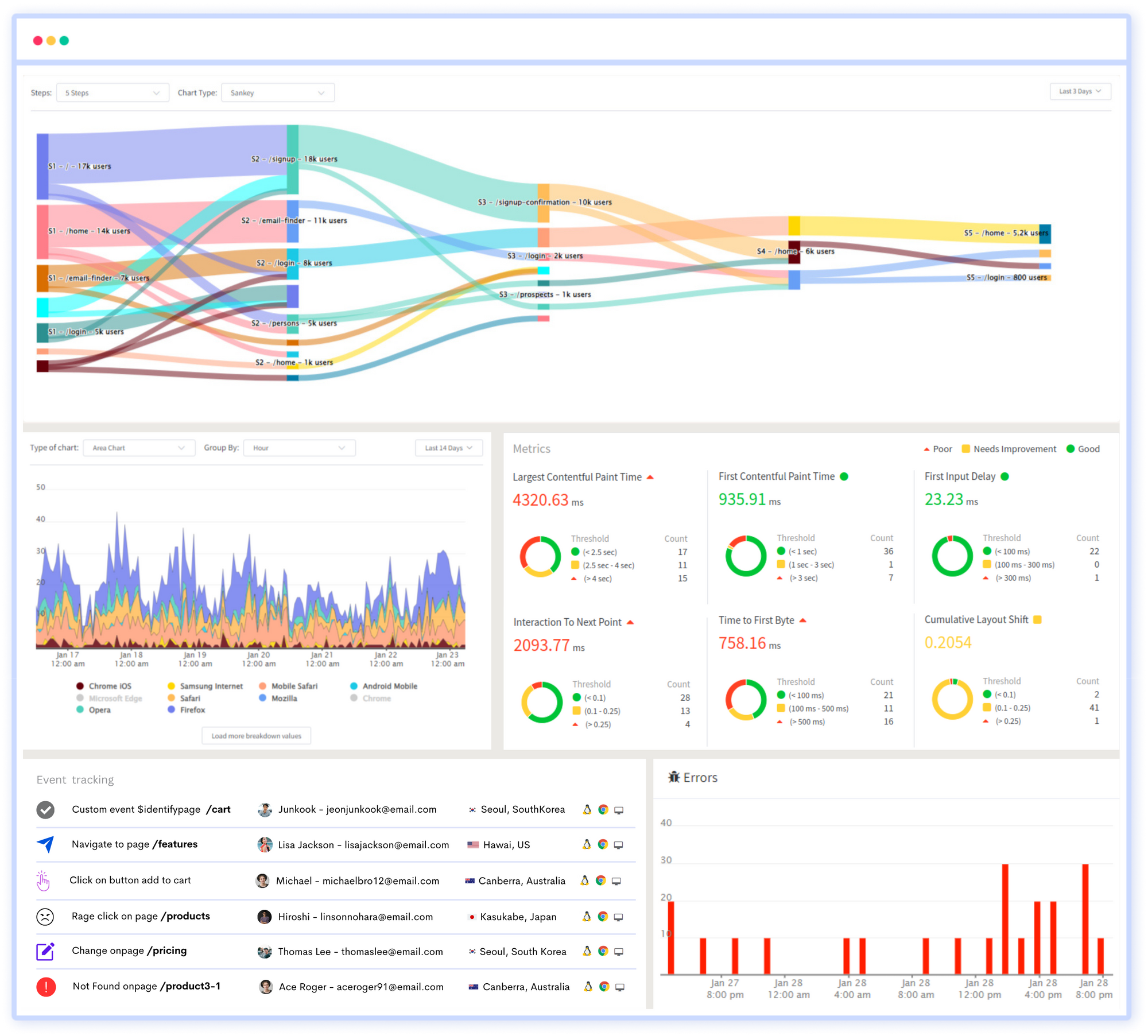PostgreSQL LATERAL join stands out as a advanced tool that let data base enginnerrs and data analysts in making queries more easily and data manipulation more effective.
By letting complex calculations, hierarchical data analysis, and recursive queries, LATERAL joins expand the possibilities of working with data.
At its core, the strength of LATERAL joins lies in their ability to create a dynamic connection between tables during the join process.
This unique feature opens up opportunities for various ways of working with data, making it possible to extract specific insights while reducing unnecessary repetition and complexity.
LATERAL joins allows subqueries or functions in a postgreSQL query to use columns from previous tables, this make it overcome the limitations of traditional query methods.
Let's see what are are the topics we will be covering in this blog:
- What is PostgreSQL LATERAL Join?
- Syntax: LATERAL keyword in queries
- LATERAL Join Example
- Correlated Subquery and LATERAL Joins
- Differences: LATERAL Join vs Other Join
What is PostgreSQL LATERAL Join?
PostgreSQL LATERAL joins are a smart technique to avoid repeating tasks and going over the same data multiple times. This makes queries work faster and makes them easier to understand. These joins step up the game for complex queries by letting you add special rules to each row before combining everything using the join.
For example, if you have a function that needs some information and gives back a table, a LATERAL join can pass info from one side of the join to the function, and then put everything together.
LATERAL joins are really flexible and can get quite complicated. If not used wisely, they might slow down how fast your queries work. That's why you need to optimize your queries really well. Bad optimization can make your queries take a long time to finish.
So, you need to really understand how your database works. When you use LATERAL joins, you need to modify your queries just right to get the most out of them.
To make LATERAL joins even better, think about using special indexes and making the most out of tools that help with query optimization, which your database has.
Choosing which columns you put indexes on and by looking really carefully at how your queries are planned to run, you can make sure your queries run without any problems and give you the answers you're looking for really quickly.
Syntax: LATERAL keyword in queries
The LATERAL keyword signals that a subquery or function in an postgreSQL query should be seen as correlated, with the ability to access columns from previous tables.
Here's the basic syntax for using the LATERAL keyword in queries:
SELECT outer_columns
FROM outer_table
LEFT JOIN LATERAL (
subquery_or_function
) AS alias ON true;PostgreSQL LATERAL Join Example
Let's say you have two tables, where you have a "users" table and a "user_activities" table. The "users" table contains general information about users, and the "user_activities" table contains records of activities performed by each user. Each user can have multiple activities.
registration table:
| register_id | studentname | registration_date |
|-------------|---------------|-------------------|
| 1 | Luke | 2022-01-15 |
| 2 | Justin | 2022-01-20 |registration_activities table:
| activity_id | register_id | activity_type | activity_date |
|-------------|-------------|---------------|---------------|
| 101 | 1 | login | 2022-01-05 |
| 102 | 1 | updated | 2022-01-10 |
| 103 | 2 | login | 2022-01-15 |
| 104 | 1 | comment | 2022-01-18 |
| 105 | 2 | updated | 2022-01-20 |
Now our goal is to put together the users, complete with their latest activity type and date. We can find the latest activity for each user with a LATERAL join.
Here's the postgreSQL query using a LATERAL join:
SELECT
u.register_id,
u.studentname,
ua.latest_activity_type,
ua.latest_activity_date
FROM
users u
CROSS JOIN LATERAL (
SELECT
activity_type AS latest_activity_type,
activity_date AS latest_activity_date
FROM user_activities ua
WHERE ua.register_id = u.register_id
ORDER BY activity_date DESC
LIMIT 1
) AS ua;The main query selects columns from both the 'products' table and the subquery result, creating a unified result set.
The result of the query will be:
| register_id | studentname | latest_activity_type | latest_activity_date |
|-------------|-------------|----------------------|----------------------|
| 1 | luke | comment | 2022-01-18 |
| 2 | Justin | post | 2022-01-20 |
The LATERAL join let you fetch the most recent user activity from the "user_activities" table, all while using the user's ID from the "users" table as a reference.
This method is more effective than running individual subqueries for each user and highlights the dynamic interaction between the primary query and the subquery.
Now this result set is generated by merging the primary query and the lateral subquery. This outcome's columns from the "users" table, along with the computed values for the most recent activity type and date derived from the subquery.
Correlated Subquery and LATERAL Joins
A correlated subquery relies on values derived from the outer query. That, the outcome of the subquery is affected by the values present in the current row that the outer query is handling.
This renders correlated subqueries valuable for scenarios necessitating operations or filtering rooted in data from interconnected tables.
However, conventional correlated subqueries can also, present performance challenges, particularly when confronted with substantial datasets. With each iteration of the outer query processing a row, which result in inefficient database operations.
The LATERAL join takes the inefficiency inherent in correlated subqueries by letting the outer query columns within the subquery.
Understand Correlated Subqueries & LATERAL Joins:
- Correlation: These subqueries use outer query row data to filter or compute subquery results.
- Inefficiency: Traditional correlated subqueries run independently for each and every outer query row, which amy lead to performance issues.
- LATERAL Join: With
LATERAL," subqueries can refer outer query columns, creating a link. - Efficient LATERAL: These joins improves by using current outer query row data, without separate subquery runs.
- Dynamic Advantage:
LATERALjoins are great at complex calculations, filtering, and data retrieval within just one query. - Cleaner Code:
LATERALjoins integrate correlated logic into queries, leading to cleaner, more maintainable postgreSQL code.
Differences: LATERAL Join vs Other Join
Just like in most relational databases, PostgreSQL gives you a bunch of ways to mix and match data from different tables using different types of joins.
Here are some common join types of PostgreSQL:
INNER JOIN: Matches and returns common rows from both tables.LEFT JOIN: Returns all left rows with matching right rows or nulls.RIGHT JOIN: Returns all right rows with matching left rows or nulls.FULL JOIN: Gets all rows with nulls for non-matching data.CROSS JOIN: Gives every combo of rows from both tables.SELF JOIN: Joins a table with itself for comparisons.NATURAL JOIN: Matches same-named columns, but can be tricky.LATERAL JOIN: Uses previous table's columns for dynamic stuff.ANTI JOIN: Grabs left rows without matching right rows.SEMI JOIN: Returns left rows with matches from the right side.UNION JOIN: Merges results, nixing duplicates by default.
When it comes to SQL, including PostgreSQL, LATERAL joins have their own unique qualities that make them stand out from other join types like INNER JOIN, LEFT JOIN, and CROSS JOIN. Let's take a look at how LATERAL joins compare to these other options:
1. Correlation and Column Referencing:
- LATERAL Join: Lets the subquery or function in the join's right-hand side use columns from earlier tables. This links the subquery and the main query, so the subquery works for each outer query row.
- Other Join Types: Subqueries in other join types can't directly use outer query columns. They work separately from the main query's context.
2. Dynamic Calculation:
- LATERAL Join: Is best when you want to crunch numbers uniquely for each prior row and use them in the join.
- Other Join Types: Not great for dynamic math because they can't tap into and use values from the main query.
3. Efficiency and Query Planning:
- LATERAL Join: Boosts efficiency by skipping the full subquery calculation. It's done row by row as required.
- Other Join Types: Could be slower in specific cases with correlated subqueries, as they're usually assessed in a more standalone way.
4. Performance Considerations:
- LATERAL Join: Needs smart query tuning to dodge slowdowns. Think right indexes and understanding query plans.
- Other Join Types: Usually have simpler optimization tricks.
5. Application Scenarios:
- LATERAL Join: Particularly useful for scenarios involving hierarchical data, recursive queries, one-to-many relationships, or when applying functions that depend on data from the outer query.
- Other Join Types: Suited for standard join scenarios where data from multiple tables needs to be combined based on common columns.
6. Syntax and Compatibility:
- LATERAL Join: Supported in certain databases like PostgreSQL. Syntax and behavior might vary between database systems.
- Other Join Types: Available in all relational databases. The syntax usually stays the same across various systems.
LATERAL joins is better because they can connect subqueries and functions with the main query. This makes them ace at dynamic calculations, sorting out hierarchies, and handling data that's tied between tables.
However, they require more careful optimization and are best suited for cases where the dynamic correlation is necessary. Other join types are more suitable for standard scenarios without such complex relationships.
Conclusion:
The flexibility of LATERAL joins, seen in their potential to do hierarchical analysis, simplify recursive queries, and perform dynamic calculations, opens up various options for getting data and changing it.
These joins not only make queries work better but also help in writing cleaner postgreSQL code that's easier to maintain by combining related logic into one query.
Remember, while LATERAL joins have big advantages, they need careful fine-tuning to balance flexibility and performance.
By using what your database system offers and really understanding how to make queries efficient, you can use LATERAL joins to their fullest without running into problems that slow down performance.
ReplayBird - Driving Revenue and Growth through Actionable Product Insights
ReplayBird, a digital user experience analytics platform designed specifically for frontend developers with advanced insights to optimize your web applications like a pro!
Unleash the power of behavioral insights with ReplayBird's intuitive heatmaps, session replays, and clickstream analysis allows you to visualize user behavior, identify popular elements, and detect pain points that might hinder user satisfaction.

Customer journey analysis and conversion funnels of ReplayBird to analyze deeper into user journeys, identify where drop-offs occur, and uncover conversion blockers.
Troubleshooting is now simpler with ReplayBird's robust debugging features. Detect and diagnose UX issues quickly, ensuring a seamless user journey from start to finish.
With ReplayBird, you have the ultimate toolkit to elevate your Next.js projects to the next level. The platform empowers you to create high-performing, user-centric applications that leave a lasting impression.


